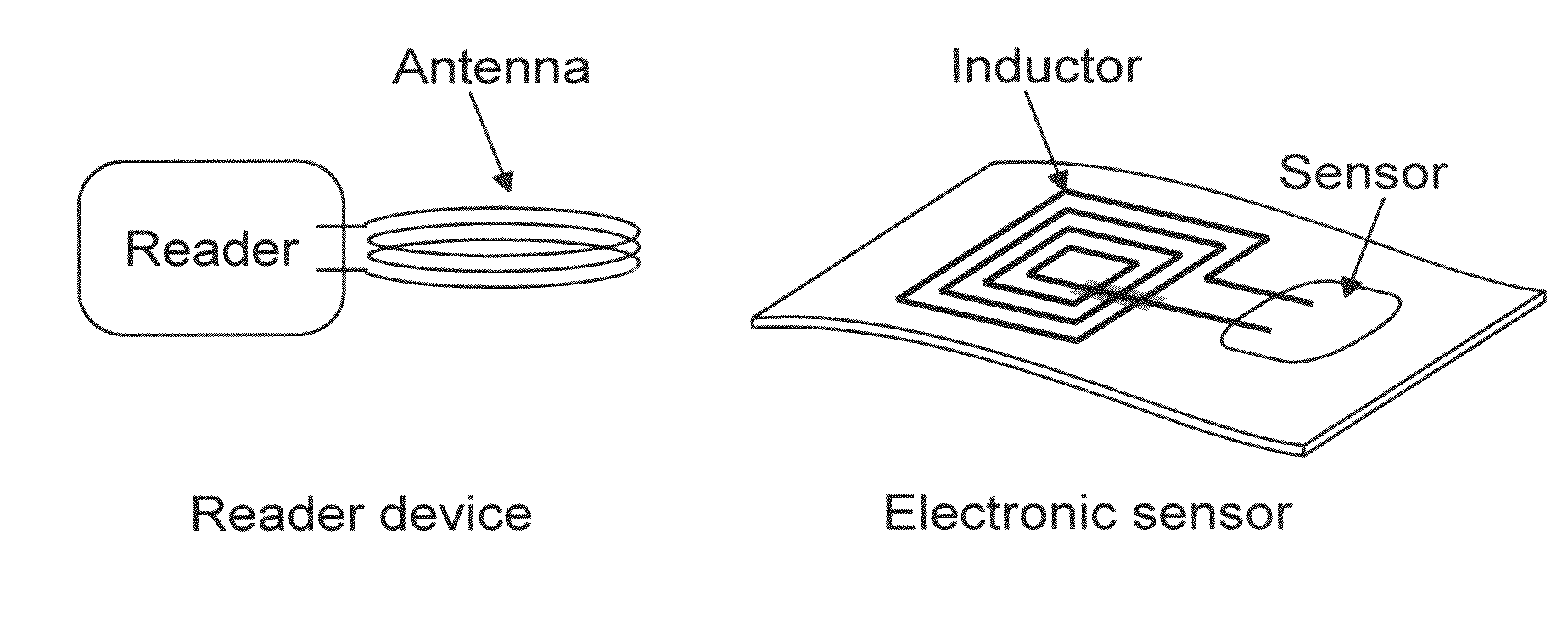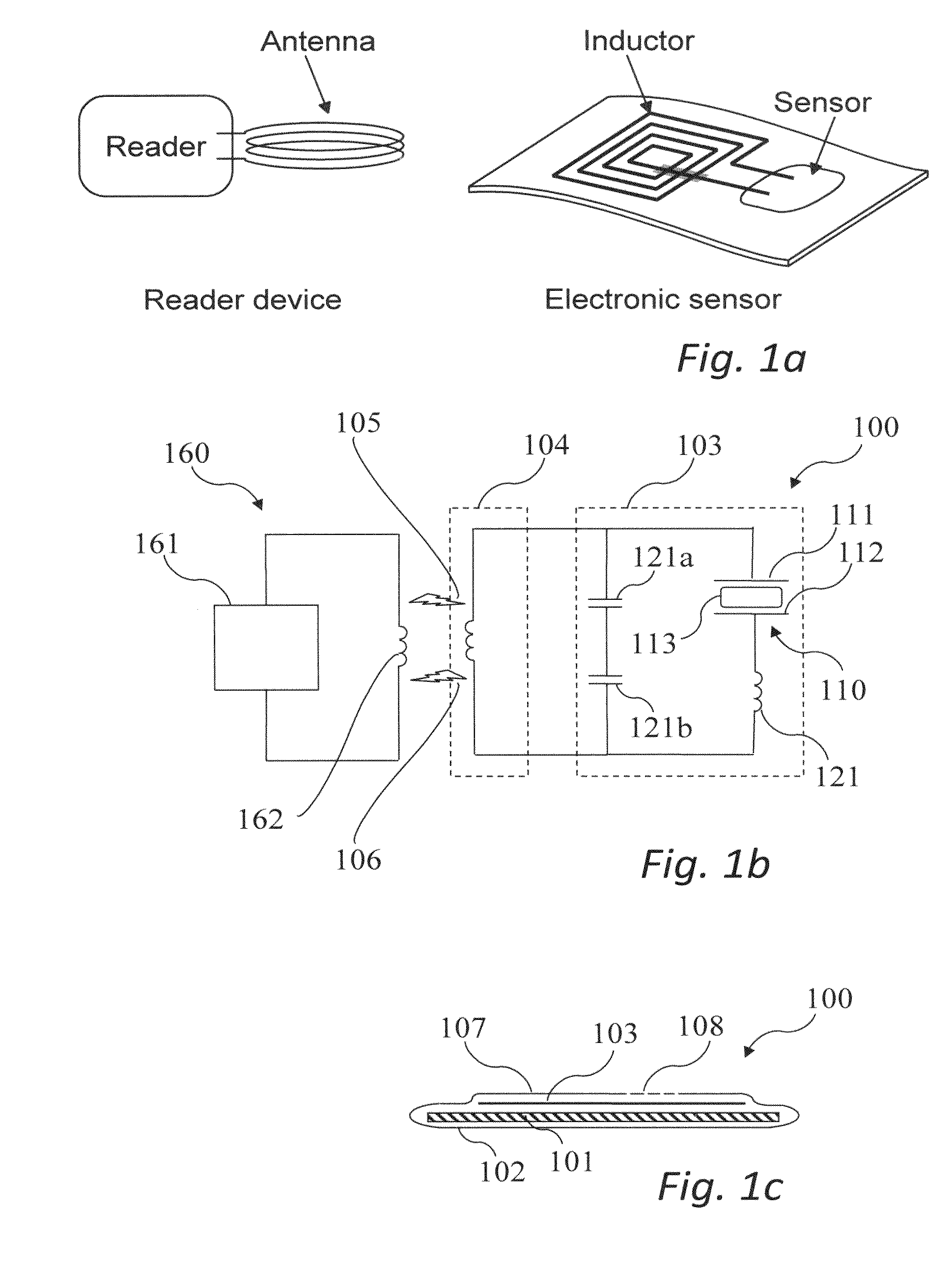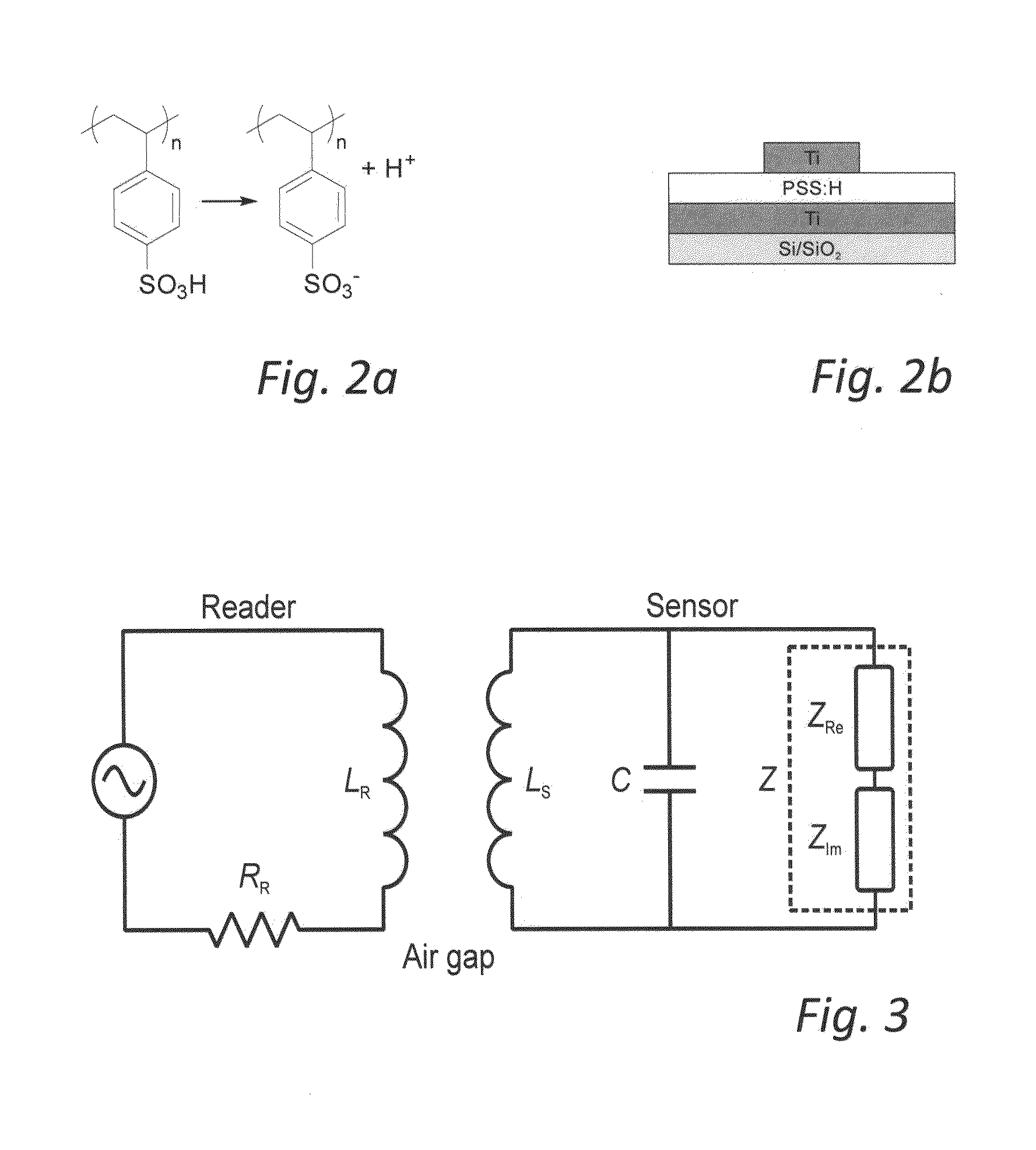Moister sensor
a sensor and moisture sensor technology, applied in the direction of liquid/fluent solid measurement, instruments, electrical equipment, etc., can solve the problems of permanent damage to the building surface, damage to the structure surface of the building, and damage to the mold affected areas, etc., to reduce the solubility of water, facilitate operation and/or manufacturing, and improve the effect of resistan
- Summary
- Abstract
- Description
- Claims
- Application Information
AI Technical Summary
Benefits of technology
Problems solved by technology
Method used
Image
Examples
example 2
[0172]With reference to FIG. 6, an exemplifying embodiment of a moister sensor 610 is shown. The moister sensor comprises and may be fabricated from materials that can be printed, or laminated, wherein the bottom electrode 612 may be formed by patterning an Al foil (9 μm-thick) on plastic films. The electrolyte comprises a poly(styrene sulfonic acid) sodium salt (PSSNa) (M.W 500,000) and is screen printed on the Al foil to form a 5-10 μm-thick layer. A circular top carbon electrode is afterwards screen printed on top of PSSNa, giving rise to the “dot-type” architecture for the sensor. The wireless readout output from the spectrum analyzer are displayed in FIG. 7, while the evolution of the resonant frequency versus humidity is summarized in FIG. 8. The evolution of resonant frequency versus relative humidity is clearly shown. A shift of resonant frequency from 190 kHz to 150 kHz is observed when relative humidity increases from 10% to 90%.
[0173]In FIGS. 9-12, frequency dependent ope...
example 3
[0175]FIGS. 13a and 13b illustrate further embodiments of moister active elements 1310a and 1310b formed by e.g. printing techniques, such as screen printing. The moister active elements 1310a and 1310b each comprises a first inert electrode 1311 comprising, or formed of, carbon, and a second inert electrode 1312 of an aluminum foil. A hygroscopic, humidity sensitive, electrolyte layer 1313 is arranged between the first and second electrodes 1311, 1312. For example, the electrolyte layer 1313 comprises Poly(styrene sulfonic acid) sodium salt, PSSNa (M.W 500,000). As further illustrated, a lacquer layer 1315, intended for insulating and / or protecting, may be arranged between the electrolyte 1315 and the first carbon electrode 1311.
[0176]The electrolyte layer 1313 may be formed by deposition of electrolyte paste comprising de-ionized water and isopropanol solvent onto the aluminum electrode 1312. After evaporating the solvent in the electrolyte paste, the lacquer layer 1315 is printed...
example 4
[0179]FIG. 14a schematically illustrates manufacturing steps of an integrated printed moister sensor tag 140, shown in FIG. 14b, according to an embodiment of the present invention. The moister sensor tag 140 comprises a printed electrolyte based moister active element which is integrated by screen printing into a resonant circuit also produced by screen printing.
[0180]With reference to FIG. 14a, a first step 141 comprises fabricating an antenna and bottom electrode for the sensor and additional capacitors. For example, an Al antenna is patterned on a plastic foil. A second step 142 comprises screen printing the solid electrolyte, most especially PSSNa (see Example 2). A third step 143 comprises screen printing of a protection layer, such as a laqcuer layer, onto the parts of the Al bottom pattern. The protection layer plays three key roles: defining active area for sensor head; preventing electrical short between antenna or bottom electrode and a top electrode of the sensor or an e...
PUM
| Property | Measurement | Unit |
|---|---|---|
| frequency | aaaaa | aaaaa |
| frequency | aaaaa | aaaaa |
| frequency | aaaaa | aaaaa |
Abstract
Description
Claims
Application Information
 Login to View More
Login to View More - R&D
- Intellectual Property
- Life Sciences
- Materials
- Tech Scout
- Unparalleled Data Quality
- Higher Quality Content
- 60% Fewer Hallucinations
Browse by: Latest US Patents, China's latest patents, Technical Efficacy Thesaurus, Application Domain, Technology Topic, Popular Technical Reports.
© 2025 PatSnap. All rights reserved.Legal|Privacy policy|Modern Slavery Act Transparency Statement|Sitemap|About US| Contact US: help@patsnap.com



